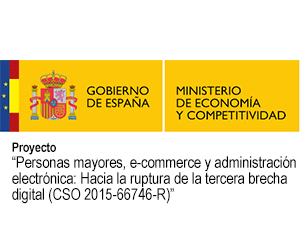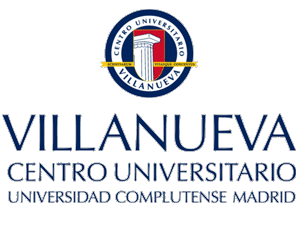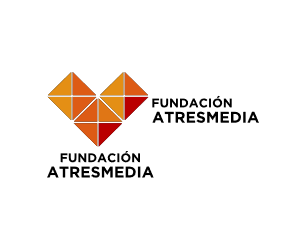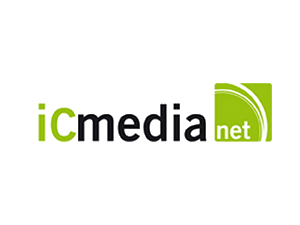Resumen
Los avances tecnológicos aplicados a la formación no presencial permiten la construcción de nuevos paradigmas sobre las metodologías de enseñanza aprendizaje. La tradicional separación entre formación presencial y formación a distancia se diluye ante nuevos modelos, integrados en el denominado como “blearning”. En este contexto, el “streaming” de vídeo se configura como un aliado de gran utilidad para recrear las dinámicas docentes de la clase magistral, pero la falta de interacción con el grupo de estudiantes y su carácter habitualmente diferido le resta eficacia como instrumento formativo. El progresivo aumento de los anchos de banda de las redes de Internet posibilita el desarrollo de nuevos escenarios basados en tres aspectos clave: la bidireccionalidad de la comunicación, la emisión en directo y la realización multicámara del evento. En este artículo se describe una propuesta de carácter experimental basada en la emisión por “streaming” en directo de una clase, pero incorporando a un número determinado de estudiantes dentro del espacio escénico de forma remota a través de videoconferencia. Evidentemente es enseñanza a distancia en cuanto a que es mediada, pero permite una interactividad y una presencia icónica de emisor y receptor, circunstancias análogas a la realidad efectiva. Así, frente a la falta de atención, la realización multicámara ofrece enormes ventajas. El concurso de planos, duraciones, puntos de vistas, movimientos y del resto de los elementos propios del lenguaje audiovisual posibilita la aplicación de estrategias rítmicas. En definitiva, acerca al estudiante a un tipo de lenguaje que le es familiar por el consumo continuo de productos audiovisuales. Frente a la inmovilidad de un único plano fijo, la realización multicámara permite que los momentos de mayor carga significativa en el discurso del docente se visualicen con planos más cerrados, mientras los fragmentos distendidos o introductorios pueden ser cubiertos por planos más abiertos. A ello hay que sumar la inserción de gráficos y, en general la cobertura más adecuada de cada acción. Se ponen en juego así nuevas dinámicas que facilitan el seguimiento de la clase y la adquisición de conocimientos. Para facilitar la interactuación con el docente, esta propuesta recupera la efectividad del cara a cara, incluso con dinámicas de plano contraplano que facilitan el seguimiento por parte del resto de estudiantes y mejoran su inmersión. Docente y estudiantes se convierten en agentes plenamente activos. El estudiante se encuentra integrado en una colectividad, donde incluso es posible transitar (de forma proxémica) a la esfera de lo privado con planos más cerrados y más explícitos dramáticamente. En consecuencia, reactiva el rol de liderazgo del docente, con mayores dosis de empatía y familiaridad. Esta propuesta pretende así ser buena muestra de la necesidad de ampliar los contextos de aprendizaje con nuevas herramientas de formación, adaptándose a las particularidades educativas del estudiante.
Palabras Clave / aprendizaje online / aprendizaje semipresencial / innovación docente / interacción / Internet / medios audiovisuales / metodología docente / streaming
Abstract
The technological advances applied in the distance teaching enables the construction of new paradigms about the teaching-learning process. The traditional separation between face-to-face and distance learning is decreasing bit a bit as a result of new models, that are integrated in the “blearning”. In this context, the video “streaming” is configured as a very useful ally to recreate the teaching dynamics of the master class, but the lack of interaction between teacher and the student group, and the delayed coverage, undermine the effectiveness of technological didactics. The progressive increase in high bandwidth networks enables the development of new scenarios, based on three key aspects; bidirectional communication, live broadcasting and multicam production of the event. An experimental proposal, based on the live “streaming” of a class, but incorporating a certain number of students within the scenic space remotely through video conference is described in this article. This proposal obviously belongs to distance learning because it is mediated, but it enables interactivity and iconic presence of teacher and students. They are analogous circumstances to reality. In this way, multicam production offers a lot of advantages. Shots, durations, points of view, movements and the rest of the elements of the audiovisual language allows the application of rhythmic strategies. This proposal brings the student closer to a type of language that is familiar through the continuous viewing of audiovisual products. Multicam makes it possible to visualize, with short shots, the segments of the speech of the teacher with the important significant load, in the face of the immobility of a single fixed shot. The distended or introductory fragments can be covered by more open shots. To this we must add the insertion of graphics and, in general, the most adequate coverage of each action. These new dynamics facilitate the monitoring of the class and the acquisition of knowledge. This initiative recovers the effectiveness of the face to face, even with reverse angle dynamics that facilitate the follow-up by the rest of the students and improve their immersion. This will facilitate interaction with the teacher. Teacher and students become fully active agents. To improve social presence, the student is integrated into a community, where it is even possible to move (proxemically) to the private sphere with closed and explicit shots. Consequently, the teacher’s leadership role is reactivated with intense doses of empathy and familiarity. This proposal pretends to be an example of the need to expand learning environments, which must be adapted to student’s educational needs.
Keywords / audiovisual media / blended learning / interaction / Internet / online learning / streaming / teaching innovation / teaching methodology
FIRMANTES
| Nombre | Adscripción | Procedencia |
|---|---|---|
| Raúl Sequera Díaz | Centro Universitario San Isidoro, adscrito a la Universidad Pablo de Olavide, de Sevilla | Sevilla |















